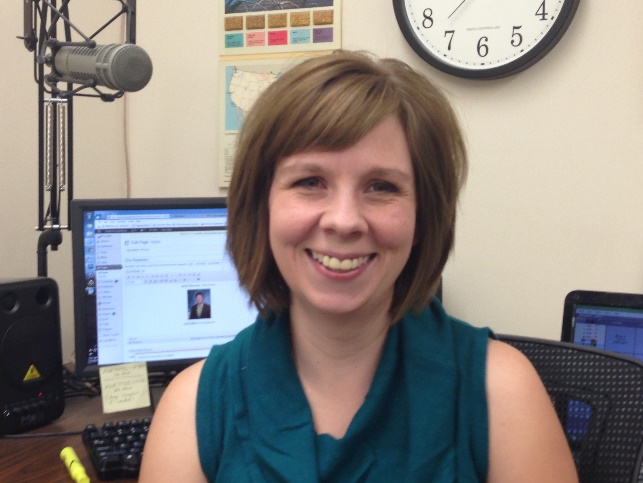 Katie Miller joined American Ag Network (Fargo, ND) in May 2013 as farm broadcaster working with Rusty Halvorson. “I’ve worked in commodities markets and brokerage for several years. In fact, I still own a market advisory service. Through that, I’d done several radio interviews and market commentaries, especially for Terry Loomis (KQLX, Fargo, ND).” In fact, when she took her job with American Ag Network, she was working in the same building as Terry’s studio. “I really enjoyed doing the commentary work, so soon Terry asked if I’d fill in for him in the mornings when he went on vacation or off to a trade show. Eventually Terry told me that American Ag Network was looking for a farm broadcaster.” Katie was very active in both 4-H and FFA showing and raising beef cattle in southern Minnesota. She served in county-level 4-H offices and as president of her FFA chapter. She participated extensively on meat and livestock judging teams as well as competing in the “livestock knowledge bowl” in 4-H. Also, she milked cows for about six years for her farmer neighbors. Katie graduated from North Dakota State University with a degree in agricultural economics with an emphasis on farm management and animal science.
Katie Miller joined American Ag Network (Fargo, ND) in May 2013 as farm broadcaster working with Rusty Halvorson. “I’ve worked in commodities markets and brokerage for several years. In fact, I still own a market advisory service. Through that, I’d done several radio interviews and market commentaries, especially for Terry Loomis (KQLX, Fargo, ND).” In fact, when she took her job with American Ag Network, she was working in the same building as Terry’s studio. “I really enjoyed doing the commentary work, so soon Terry asked if I’d fill in for him in the mornings when he went on vacation or off to a trade show. Eventually Terry told me that American Ag Network was looking for a farm broadcaster.” Katie was very active in both 4-H and FFA showing and raising beef cattle in southern Minnesota. She served in county-level 4-H offices and as president of her FFA chapter. She participated extensively on meat and livestock judging teams as well as competing in the “livestock knowledge bowl” in 4-H. Also, she milked cows for about six years for her farmer neighbors. Katie graduated from North Dakota State University with a degree in agricultural economics with an emphasis on farm management and animal science.
What is the role of the farm broadcaster? “I think the farm broadcaster is in a very unique position. The job offers an opportunity to keep both producers and agribusinesses in the loop as far as political and technological developments that can aid (or hinder) their businesses. Farmers are busy people with a lot of jobs to do, and they don’t have time to sit down and keep track of all that’s going on out there. That’s a responsibility that we have as farm broadcasters.
“On the flip side, it also offers the opportunity to help educate the general population about how modern agriculture truly operates.As populations have become more and more urban in nature and people become less and less attached, it’s easy for them to lose touch with how important agriculture really is and the challenges that producers face to provide them with affordable, abundant food. Too often in agriculture, I think, we preach to the choir on things like animal welfare, GMO’s, and food safety. Farm broadcasters have the opportunity to reach a whole different audience that really needs to hear the message on agriculture.”
How do you "air on the side of agriculture?" “Personally, I try to find stories that I know will challenge the way people look at things or stories that will spark conversations. There’s a lot of news, and a lot of perspectives out there, and I think it’s important that we present all sides of the story, even if it’s not something that we agree with or necessarily want to hear.” She concludes, “Keeping yourself in the box is only closer to the hole you stick your head in.”
